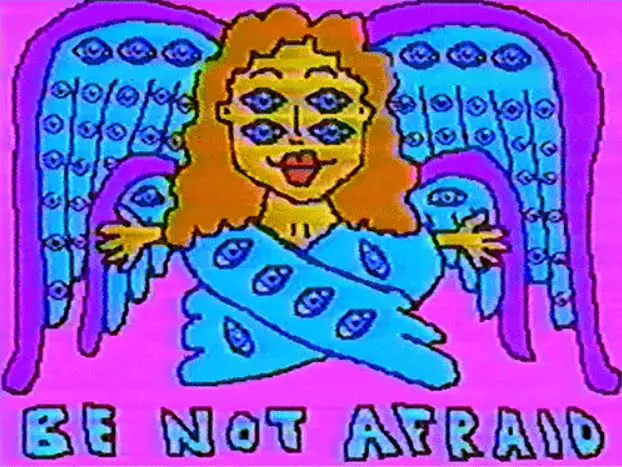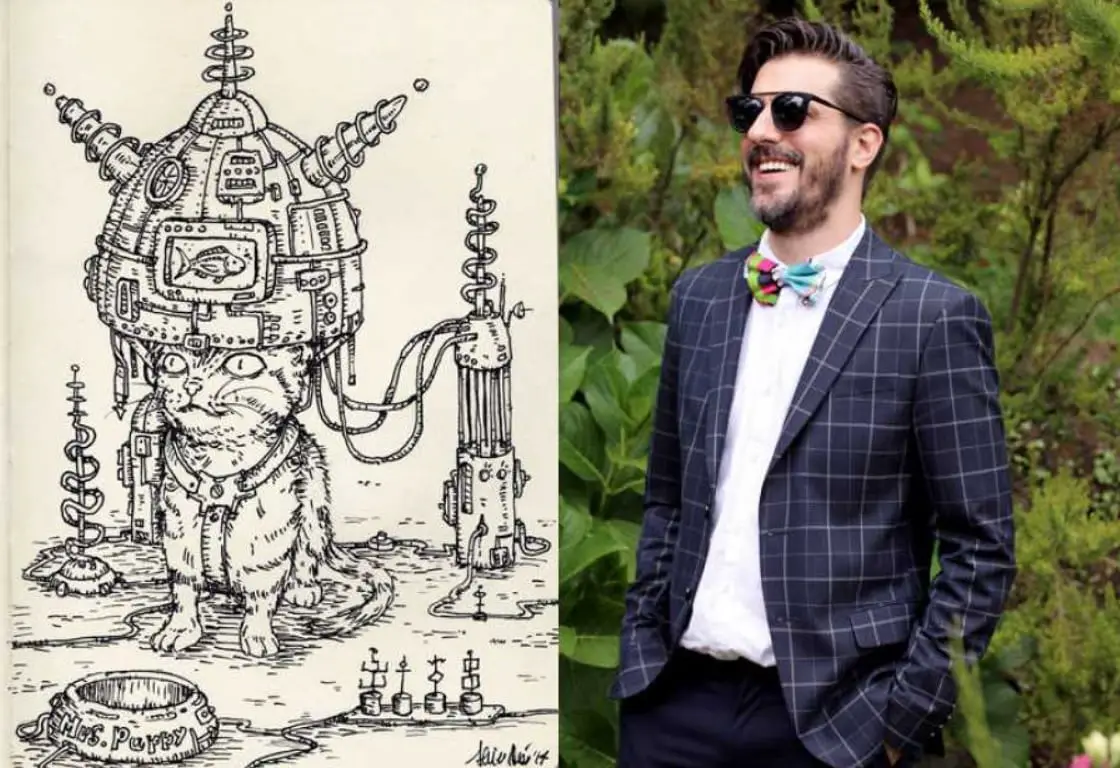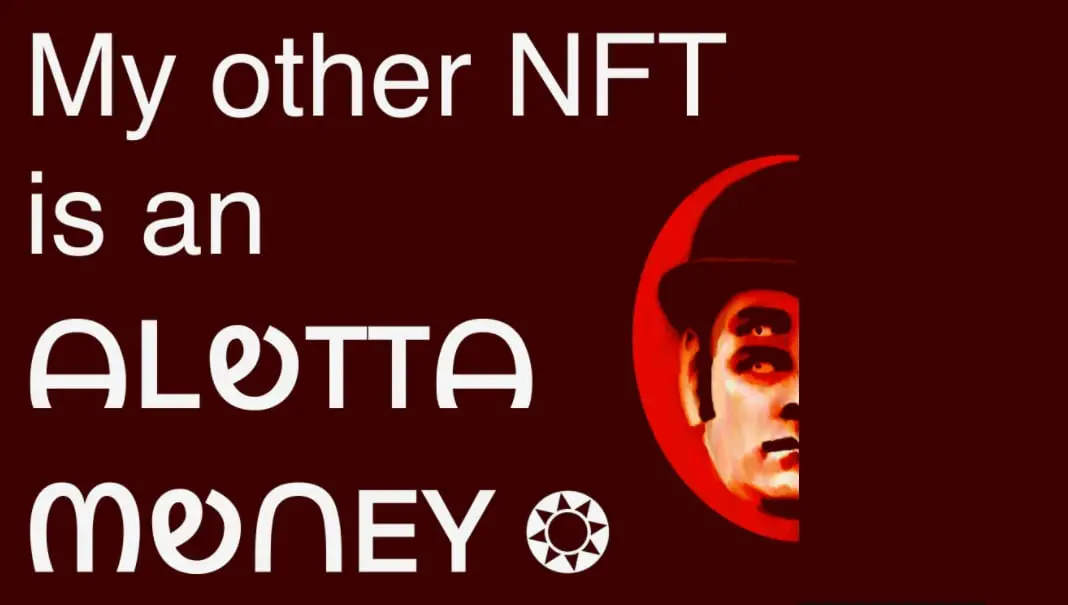Lately, we have been talking a lot about NFTs, some people say it will change the understanding of art, fashion and content forever, let’s see what artists’ point of view are on this subject.
Beeple‘s 69 million sale is the best example of the current NFT fever. A boom whose figures are difficult to justify and many attributes to pure speculative interest. To try to better understand this blockchain-based phenomenon, we talked to those directly involved in NFTs: digital artists.
In a few months, NFTs have disrupted the world of collecting and digital art to such an extent that many of these artists can no longer conceive of their work without them. This is how the arrival of NFTs has affected them, what advantages they see and how they defend that this technology is here to stay.
The arguments in favor of NFTs
One of the most concrete definitions of the sense of buying works through NFTs is offered by Cent’s Valuable project, the platform that allows you to buy tweets. It states:
“Owning any digital content can be a financial investment, hold sentimental value, and create a relationship between collector and creator. Like an autograph on a baseball card, the NFT itself is the creator’s autograph on the content, making it scarce, unique, and valuable.”
In the first place, it effectively points to a purely financial motivation. Additionally, it is explained that these NFTs can have their own sentimental value. Neither the paper nor the lines of code need have any relevant inherent value, but the importance is attached to the value generated around them.
Finally, Valuable points out that these NFTs are a way to create a relationship between the collector and the creator. With NFTs, digital artists not only give access to their work, but they also send them a ticket, an autograph, an added gesture that can increase the value of the work itself. In the same way that certain autographs have increased the price of certain objects significantly.
Sarah Zucker, a Los Angeles artist known for her VHS Video Art and for being the first to present .gif images as art at the Brooklyn Museum, explains her vision: “NFTs are an interesting technology because they act as a container that transforms a digital artwork into a “virtual object” that can be collected. This allows for the evolution of art collecting itself because now digital art can possess the same qualities that give value to a physical artwork – scarcity and uniqueness – while maintaining its unique quality of infinite visual accessibility in its native format.”

In Zucker’s view, NFTs will not replace traditional artworks, but they will enable a market to develop around a new generation of artists. In other words, in the American artist’s view, NFTs are a catalyst for digital art.
Optimism among digital artists about NFTs is high, mainly because many of them have seen their earnings skyrocket. Balaji S. Srinivasan, ex-CTO of Coinbase, argues that NFTs are at an early stage, but that they can be a revolutionary technology because they are “pseudonymous, international, monetizable censorship-proof digital art”. Arguments that are usually put forward when talking about blockchain-based technologies are repeated here.
Right now we’re just at the early stages.
But pseudonymous, international, monetizable censorship-proof digital art will shake regimes.
And legacy propaganda outlets will rotate like turrets with no one to target.
— Balaji (@balajis) March 3, 2021
Andrés Reisinger, award-winning director of Reisinger Studio, 3D interior designer for brands such as Patricia Urquiola, Ikea or Nike, maintains some of his collections in marketplaces such as SuperRare and NiftyGateway, where he sells digital art and associates its corresponding NFTs. The artist explains that in recent decades the cultural world has been drifting towards the digital.
In Reisinger’s case, the artist sells his furniture alongside NFTs. With them, a buyer can create a digital gallery and place his furniture inside and could also sell it for a profit. But additionally, the artist opens the door to shipping the physical furniture. The NFT in this case is a digital endorsement in addition to simply owning the furniture. The buyer also acquires the rights to create a gallery with that piece of furniture or resell the design so others can make them.

“One of the main benefits of owning a digital collectible versus a physical collectible is that each NFT contains distinctive information that makes it different from any other NFT and easily verifiable. This makes the creation and circulation of fake collectibles useless because each item can be traced back to the original issuer,” explains Reisinger.
The technology behind NFTs allows transactions to be easily tracked, as with cryptocurrencies, but it is not without its problems. Several users have recently reported that their accounts were hacked and they lost their NFTs worth thousands of dollars.
Another argument Reisinger puts forward revolves around the ownership of these tokens: “They are immutable, which means that collectors do own their NFTs, not the companies that create them. This for example contrasts with buying things like music on iTunes, where users don’t actually own the songs, they simply buy the license to listen to the music.”
In this respect, it is looking like NFTs must improve their robustness or they could end up breaking the moment the servers of the marketplaces where some of these tokens are held disappear. One of the arguments used by digital artists is that being blockchain-based they do not depend on third parties or other platforms, but in practice, many of these tokens are still subject to the availability of the marketplaces where they are offered.
Improving royalty control
Digital artists champion the benefits of being able to sell directly, without the need for intermediaries such as an auction house or gallery. But there is one aspect where NFTs have an important advantage: the control of royalties.
Javier Arrés, winner of the London Art Biennial in 2019, explains how NFTs have been a great leap for artists like him.
With more than 90 works sold with NFTs, Arrés reviews that the sale of the two tweets for $1,274 was a surprise, although he justifies it in its visibility within the world of cryptoart. “A year and a few months ago I was approached by Makersplace saying they were looking for digital artists with some renown and they oriented me to the world of cryptoart. Soon after that, we did the first auction and it worked out really well. That’s where they put value on you. Since then I’ve been selling a lot,” Arrés explains.

For this artist who won the Art Biennial with Chinese inks on a two-meter paper, the move to digital art and NFTs has allowed him to multiply his annual earnings by 10 times. “I was already making a good living, but it’s been brutal. By now I have over 300,000 euros in sales.”
In Arrés’ opinion, “royalties and NFTs change everything.” As it is based on blockchain, it is very easy to trace sales. This makes it possible to program and make progressive sales transparent. A relevant aspect since these artists can charge a percentage with each subsequent sale.
These royalties were not always made in a controlled manner afterward, but with the advent of NFTs, transparency has improved, say the various artists. A commission percentage that can be programmed at the moment of offering the NFT and that is applied without even having the need to know the third or fourth buyer of the original work.
Crypto-art follows the rules of traditional art
Proponents of crypto-art argue that what happens in traditional art, also works with NFTs. This reasoning is where they justify that it is normal that speculation is generated around certain works.
An important part of the buyers with NFTs are people linked to the world of cryptocurrencies, who seek to “inflate the topic so that it is talked about and the market is generated”. The “Bitcoin whales,” as Arrés defines them.
“I generally believe that collectors have a good criterion, although there is not always a direct correlation between the work and its price, as in art,” exposes the artist. In this disjunctive, he points us to the Pak sale, where the Crypto Art Museum bought ‘Red’, a simple red pixel, from him. “These are quick things, but someone had to be the first to sell a pixel, and it was him,” Arrés argues.
In an attempt to justify the price of Beeple’s work, Arrés explains that it is a monumental work, with 15 years of work behind it, and with a theme that fits very well with these times: “Maybe it has been very high and that many wanted the NFT to be news, but I will tell you that the work is worth it. If I’m honest, Beeple’s work has a lot more work behind it than Jeff Koons’ figures. You have to appreciate that as well.”
With NFTs, a tool has been created to support work. What used to be one-off contracts or commissions can now be associated with an NFT to somehow incorporate additional recognition. “In the future, any commission for a professional illustration or design should include the NFT,” Arrés expounds. The artist explains that in the past he didn’t offer them, but if he had access to them he probably would have generated one. This is a way to “prove” that the work is the original work.
While in traditional art the focus is on the painting or the work itself, along with its respective certificate, in digital art all eyes have been directed towards the artist’s own certification. Towards an NFT that beyond its technical particularities, in the end, it is an asset totally based on trust with the seller. And this can have its respective problems, from the seller not really being the artist or someone authorized by the artist or that the artist is selling us an NFT as something unique but later sells NFTs of the same work to other people without our permission.
When artists are asked about whether all buyers of NFTs are related to the crypto world, their answer is no. Although several of them acknowledge the ease of selling a piece for €500 and then reselling it for €5,000 after a few months.
A budding market where “right now everything seems like a good investment,” Arrés expounds. “It’s hard to define, but I get 50-50% between collectors and investors.” The Madrid artist recalls an American veteran who bought several digital paintings from him because he liked his work and how a son gave his father a “new-age collectible” as a gift. “The collector factor is also very big here,” he explains, noting that being something new, many users are interested in acquiring one of these tokens as something valuable. As if in the future they will have a value similar to trading cards in the first editions of a collection.
Alotta Money, a French crypto artist with a large number of works that mix virtual reality and subversive humor, summarizes the current situation of NFTs: “We used to draw in the sand. Now we can record our works on the blockchain, sign them, create verifiable digital scarcity, as well as digital property. But we are still cavemen.”
Enthusiasm is widespread among all the artists consulted, although they acknowledge that we are still at an early stage. In the same way that cryptocurrencies have generated a whole series of challenges of their own, the implementation of NFTs will also open up multiple avenues.

“I think it’s going to be much more popular. Think about the NBA and top shots. Isn’t La Liga or the Champions League going to come in? These organizations are constantly looking for new business models. Or the luxury market. Or collectibles for Fortnite or Pokémon. Even Amazon. There is a lot of movement and many are going to want to enter,” concludes Arrés. NFTs are on everyone’s lips because of the huge amounts of money they are generating and where the general reflection is that they are here to stay.
There is also no shortage of voices critical of these tokens that believe that a bubble is being generated, maintained solely by the interest of the participants themselves in seeing how their assets continue to reach higher valuations. A value sustained by the very demand they are generating.
The digital artists consulted defend NFTs for their advantages with royalties and for helping to give value to their creations, but it is not clear that these NFTs can be sustained without the third-party platforms that are still necessary to keep many of these tokens active.
When acquiring an NFT we are not buying the work itself, but a certificate. A “ticket” offered to us by the author to assure us that we have something “unique and indivisible”, but whose value can change overnight in case this trust is broken, either because the seller is not the original author or because the creator has decided to change the terms and make some move that diminishes the uniqueness of the token.
We will have to wait and see what happens over time and if these NFTs or artist certificates are enough to sustain the value of the works and the price level reached in the transactions.





